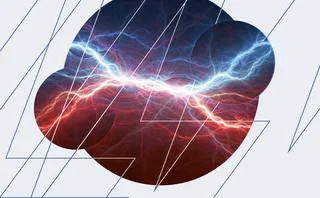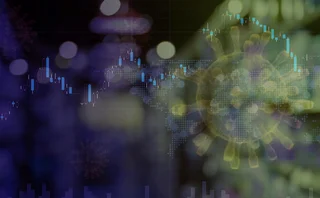
Video: Enron 'best' and 'lowest' career moment, says Kaminski
Vincent Kaminski opines on topics including the "best" and "lowest" moment of his career, financial regulation, oil fundamentals and European energy markets in a wide-ranging interview filmed at Energy Risk Summit USA
Vincent Kaminski, Houston-based professor at Rice University’s Jesse H Jones School of Business, says the 2001 bankruptcy of Enron provided both the "best" and "lowest" moments of his career.
Speaking in a video interview on the sidelines of Energy Risk Summit USA, Kaminski expresses sadness at the human suffering caused by the collapse of the Houston-based energy trader, where he served as managing director of research from 1992–2002. At the same time, he says he was gratified that his former team were able to quickly find other jobs, thanks to a collaborative culture he helped to promote.
“It may be a paradox, but the best moment of my career was also the lowest moment of my career… I was managing a large group of professionals and I have to say that practically everybody in my group survived the fall of Enron with their reputation intact and they found jobs in the industry without any problems,” he says. “I think I created an environment for people who were my associates, allowing them to develop their skills and grow and flourish, and this is not true of every organisation in the financial industry.”
Nonetheless, Kaminski is candid about the harsh consequences of management mistakes, including the loss of many employees’ life savings. The questionable ethics and wisdom of some of Enron's accounting practices were famously flagged up by Kaminski, among others, long before the company filed for Chapter 11 bankruptcy in December 2001.
"This was also a very sad moment in my life," he continues. "You know, some employees of Enron who only had one employer in their lifetime lost their life savings… There was one lady I knew that was just buying her first house. She was close to being 60 years old, and she couldn’t buy her house.”
In a wide-ranging interview, Kaminski also reflects on the impact of financial regulation, oil market fundamentals and moves to create a single energy market in the European Union.
On the impact of regulation, Kaminski says he has "mixed feelings" about the 2010 US Dodd-Frank Act, the post-financial crisis law that sought to regulate over-the-counter derivatives. "I have very mixed feelings about Dodd-Frank. On one hand, I believe that the reform of the financial system was necessary… many parts of the financial system were rotten to the core," he says. "On the other hand, I believe that the energy industry is an example of collateral damage. We didn’t cause the financial crisis, but we are paying the price for fixing the system."
In the EU, a package of financial legislation called Mifid II entered into force in June 2014, which will extend the reach of financial regulation to a much broader part of the commodities market. Energy derivatives and physical energy markets are "still a very small part of the overall market", says Kaminski, but many energy firms are having to invest in "very expensive fixes" to cope with these regulations. "Many solutions developed under Dodd-Frank and Mifid are targeting certain problems which developed over time in the financial markets, not in the energy markets," he says.
After several relatively quiet years in the oil market, crude prices began to slip during the second half of 2014. From a high of $115.06 a barrel (/bbl) on June 19 last year, front-month Brent North Sea futures traded on Atlanta-based exchange Ice dropped below $50/bbl in January 2015. On July 15, the contract settled at $57.05/bbl.
Kaminski believes much of the pressure on oil prices has come about as a result of near-zero interest rates following the 2008 financial crisis. Such low rates provided shale drillers with ready access to cheap funding, helping to perpetuate the boom in unconventional US oil and gas exploration.
“One of the very important factors contributing to the drop in oil prices was a very low level of interest rates," he says. "Low interest rates allowed the producers to obtain funding on very good terms, and – given the appetite for risk which is typical of people who go into the oil business or natural gas business – if you give them money on good terms, they will use it to drill a hole in the ground.”
Across the Atlantic, the European Commission is attempting to forge a single European energy market using tools such as market coupling and common network codes. Asked about the continent's progress towards more liberalised energy markets, Kaminski suggests there are dangers in forcing a unification. "The main thrust of the efforts in Europe is to create a unified European market with the same rules [and] the same conventions across the rest of Europe," he says. "I am a bit sceptical. Eventually it probably will happen – it probably should happen – but rushing it could be a mistake."
Kaminski questions the benefit of a single market to island states such as Cyprus or Malta, saying it would be more logical to focus on binding similar markets together. Such markets are likely to be drawn together even in the absence of government intervention, he suggests, citing the example of northeastern US power market PJM.
"About 90 years ago, the first power pool, PJM, was formed in the US. This was formed by a group of the electric utilities operating in the northeastern US and nobody told them to create a power pool: they acted in their own self-interest," he notes.
The interview was filmed as Kaminski put the finishing touches to the fourth edition of Managing energy price risk for Risk Books. The fourth edition contains significant updates and revisions compared with the third edition, which was released in 2004, he says. That includes new sections on topics such as price risk and credit risk, as well as a chapter summarising the most important developments of the past 10 years.
Kaminski suggests the inclusion of that section is particularly apt: "I have to say that if somebody made a prediction in 2005 – a prediction completely correct of what eventually transpired in the last decade – this person would be committed and would spend a few years in a well-padded room, because nobody would believe the things that actually happened were possible."
Only users who have a paid subscription or are part of a corporate subscription are able to print or copy content.
To access these options, along with all other subscription benefits, please contact info@risk.net or view our subscription options here: http://subscriptions.risk.net/subscribe
You are currently unable to print this content. Please contact info@risk.net to find out more.
You are currently unable to copy this content. Please contact info@risk.net to find out more.
Copyright Infopro Digital Limited. All rights reserved.
You may share this content using our article tools. Printing this content is for the sole use of the Authorised User (named subscriber), as outlined in our terms and conditions - https://www.infopro-insight.com/terms-conditions/insight-subscriptions/
If you would like to purchase additional rights please email info@risk.net
Copyright Infopro Digital Limited. All rights reserved.
You may share this content using our article tools. Copying this content is for the sole use of the Authorised User (named subscriber), as outlined in our terms and conditions - https://www.infopro-insight.com/terms-conditions/insight-subscriptions/
If you would like to purchase additional rights please email info@risk.net
More on Energy
Energy Risk Commodity Rankings 2024: markets buffeted by geopolitics and economic woes
Winners of the 2024 Commodity Rankings steeled clients to navigate competing forces
Chartis Energy50
The latest iteration of Chartis’ Energy50 ranking
Energy trade surveillance solutions 2023: market and vendor landscape
The market for energy trading surveillance solutions, though small, is expanding as specialist vendors emerge, catering to diverse geographies and market specifics. These vendors, which originate from various sectors, contribute further to the market’s…
Achieving net zero with carbon offsets: best practices and what to avoid
A survey by Risk.net and ION Commodities found that firms are wary of using carbon offsets in their net-zero strategies. While this is understandable, given the reputational risk of many offset projects, it is likely to be extremely difficult and more…
Chartis Energy50 2023
The latest iteration of Chartis' Energy50 2023 ranking and report considers the key issues in today’s energy space, and assesses the vendors operating within it
ION Commodities: spotlight on risk management trends
Energy Risk Software Rankings and awards winner’s interview: ION Commodities
Lacima’s models stand the test of major risk events
Lacima’s consistent approach between trading and risk has allowed it to dominate the enterprise risk software analytics and metrics categories for nearly a decade
2021 brings big changes to the carbon market landscape
ZE PowerGroup Inc. explores how newly launched emissions trading systems, recently established task forces, upcoming initiatives and the new US President, Joe Biden, and his administration can further the drive towards tackling the climate crisis
Most read
- Top 10 operational risks for 2024
- The American way: a stress-test substitute for Basel’s IRRBB?
- Filling gaps in market data with optimal transport







